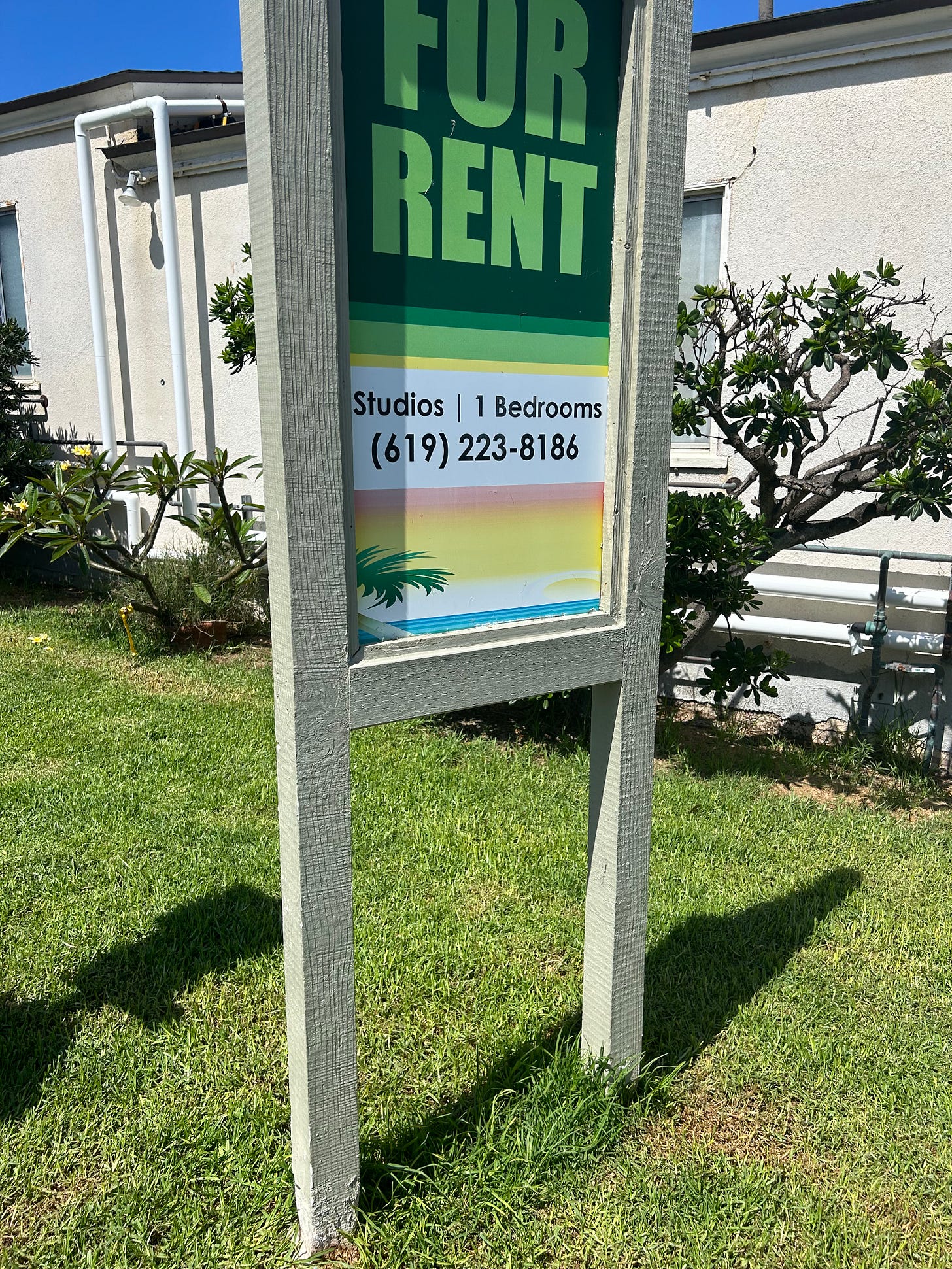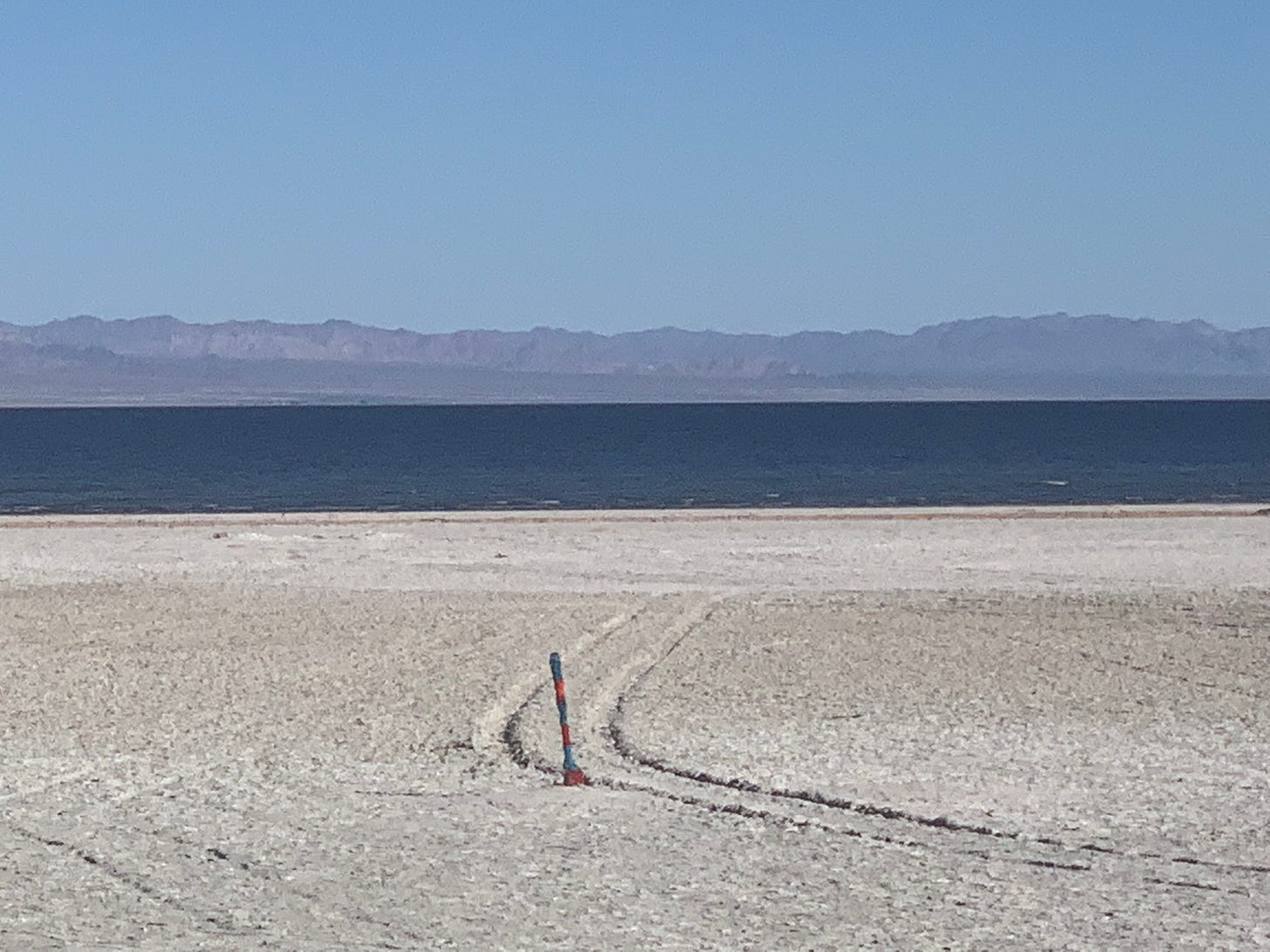If the American refugees of the 1930s era that Edmund Wilson wrote about fleeing to San Diego only to learn that they had “they come to the end of their resources in the empty California sun” ended up filling the coroners’ records then, decades later, it appears that many of those who followed their well-worn path today have simply decided to turn their backs on our region.
They have abandoned the city Wilson labeled “the Jumping-Off Place” and decided to chase down their elusive dream somewhere else.
In fact, despite the claims of San Diego’s triumphalist boosters that we occupy paradise on earth, people are bolting from the Promised Land in droves, leaving some popular areas of our metropolis looking like tourist rental zones in search of actual neighborhoods.
Last week in a meditation on my recently re-released San Diego novel, Drift, I observed that it was written “in a time when the financialization of real estate has transformed urban spaces across America, pricing out and/or forcibly relocating myriads of us while brutally pushing a record number of our neighbors into homelessness.”
Unfortunately, it has only gotten worse from when that book first appeared in 2007, and the consequences of this include not just a historic housing crisis but an unexpected exodus of middle- and working-class folks to what they perceive to be greener pastures than the place that likes to advertise itself as “America’s Finest City.”
As the San Diego Union-Tribune recently reported:
Against the backdrop of soaring housing costs in the last year, tens of thousands of San Diego County residents decided to take a big leap. They left.
New estimates released Thursday by the U.S. Census Bureau reveal that close to 31,000 more people moved out of the county than moved in between July of 2022 and July of 2023 — almost double what it was a year earlier. With the exception of the first year of the pandemic, when the net outflow exceeded 33,000, that volume of people exiting the county hasn’t been seen in nearly three decades . . .
The last time San Diego County saw a comparable exodus of residents was in the early 1990s, when the region was mired in a deep recession and the jobless rate had surged to nearly 8 percent.
While there are many factors driving people to move from the county to elsewhere in California or out of state, demographers agree that the leading motivator is the region’s unabated rise in the cost of housing, coupled with a still lingering willingness of many employers to permit remote work.
Of course, no one should be shocked that that the California Dream is deader than a doornail in a city where it takes a salary of $273,613 a year to afford to buy a house and over a decade for most couples to save enough for a down payment. And with a rental market that is just as brutal for the middle-to-bottom-tier of the economic spectrum, even a cup of coffee under the perfect sun is far less viable than it used to be merely a few years ago.
Without either immigration or the birth rate being able to replace enough people for San Diego to continue to grow, we have hit a dead end. As more and more workers come to view living in Las Vegas, Idaho, or some other remote outpost while Zooming into San Diego for a paycheck, a significant economic shift is occurring. Local economist Alan Gin notes that these workers “are no longer spending money in the community where they live, nor are they helping sustain local businesses, and as a result, are contributing to a decrease in state and local tax revenue.” This loss of revenue will bring with it a decline in essential services, the quality of infrastructure, and other public amenities if this becomes the new status quo.
This will further deepen economic inequality and the racial divide that comes with it and create a generational rift between older, existing homeowners and younger workers forced to rent. Shut out of the market, abandoned to wander past “for sale” signs offering up shoe box-sized houses for over a million dollars, a large chunk of the local population is without any meaningful options. The lack of abundant, genuinely affordable housing sufficient to address the needs of the middle-and-working classes no less keep the precariat poor from homelessness, has left a gaping hole in the social fabric of our city.
What we see here in San Diego is not a unique situation, but one of the more extreme examples in the country of what happens when we view housing as a commodity rather than a human right.
As a UN report presciently observed back in 2017:
With roots in the 2008 financial crisis, the impact of the shift from housing as a place to build a home to housing as an investment has been devastating . . . From mass forced evictions to make way for luxury developments, to nameless corporations purchasing real estate from remote boardrooms, to empty homes and people pushed out of their communities because they simply could not afford to live there, the repercussions have been felt across the globe.
Thus, San Diego is merely part of the ongoing, decades-long global trend toward the financialization of housing so it is too simplistic to view our dilemma as the product of one mayor’s policies, nonetheless we need to stop looking to market forces to help save us or things will surely worsen.
Todd Gloria didn’t create the crisis we are in, unregulated capitalism did, but developer-friendly half measures won’t cut it. We simply aren’t producing enough affordable housing to solve the problem despite a number of well-intended efforts by the Mayor.
Given the nearly certain re-election of most local Democratic incumbents and the lack of any serious, viable progressive opposition, the electoral debate around these issues is likely to be less than illuminating at best.
The conundrum is that without policies that come with sufficient checks to the interests of capital and proper resources to support the greater public good in a tangible way, progressive forces have little more than empty words to tackle the results of decades of growing economic inequality and the blitzkrieg of hypergentrification brought to us by moneyed interests.
That’s why the revenue measures currently being proposed to bolster city services and improve transportation and infrastructure are desperately needed despite the cynicism they are being received with in some quarters. As Councilmember Sean Elo-Rivera points out in the San Diego Union-Tribune, “Study after study has shown there is no amount of efficiency or streamlining that will fill the gaps this city has as a result of decades of underinvestment.”
In addition to these efforts, folks like Assemblymember Alex Lee at the state level have pushed for more profound policy shifts like social housing and Assemblymember and chair of the Land Use and Housing Committee and of the San Diego County Regional Task Force on the Homeless Chris Ward is looking at innovative ways to address houselessness, avoid sprawl, and provide more housing that offer promise, but such initiatives have yet to take root. Chances are they will be met with stiff resistance from the corporate sector if any revenue increases are necessary to achieve real change.
In the meantime, people are leaving San Diego in large numbers or staying and struggling against the tide.
Coda: Jogging around the Corpse of the California Dream
Of course, the problem for those fleeing the circumstances imposed upon us by the rigors of late capitalism is that there is no place left to go where this won’t eventually catch up to us.
Leaving the Jumping-Off Place, we only backtrack, futilely chasing down the ghost of a dead dream. If we can no longer even conceive of a world outside of the present one constructed for us by unbridled market forces, then we are simply prisoners of our impoverished imaginations. Perhaps this explains our vulnerability at present to the siren call of fascism.
As we approach retirement, I sometimes joke with my wife that we can still afford to buy a house in the region if she would simply get over her aversion to the rough and tumble world around the edges of the Salton Sea where a quick Zillow search will usually reveal quite affordable housing in Salton City or Bombay Beach across the water on the eastern shore.
In fact, I point out, we once drove past an entire motel complex by what was then the seashore for only ten thousand bucks! We even met a married couple, yoga instructors from Orange County, in a hotel pool in Borrego Springs who were drunkenly rhapsodizing about the possibilities of the cheap land there. After the rapture, the beach!
What could go wrong?!
I was reminded of these conversations again last week when I read a Guardian story about “Irondad,” the ultra-marathoner jogging around the Salton Sea in a gasmask, searching for an answer for what ails us:
The runner’s sudden appearance felt apocalyptic: he wore an ominous full-face gas mask to block out dust, and a pair of snowshoes strapped wing-like to his back, to traverse the area’s expansive mudflats. He dressed all in black, with the exception of neon orange sneakers that were already caked in dirt from running and hiking the past 16 miles, a remote stretch of both cracked and swampy earth that very rarely sees any other human activity . . . Irondad, who requested that he be referred to by his runner name, hopes that his unusual annual pilgrimage will rally people around the plight of the dwindling Salton Sea, an issue that has long been called an “environmental and public health crisis”.
As the Guardian story outlines, Irondad is a software engineer from the Bay Area who has landed for half the year in his own desert of the real in Bombay Beach, “one of the tiny, tight-knit communities that sits on the periphery of the Salton Sea.” He takes part in the “Bombay Beach Biannele” and his surreal run around the sea is just one of many “works of art and activism” that take place in their word-of-mouth spring arts festival.
We only have a few years left to see if we can afford to stay in San Diego after putting our son through college rather than buying a home. Will we get priced out? That’s an open question for us and a good number of other San Diegans pondering retirement in the most expensive city in the United States. Maybe our political leaders will figure things out. Maybe not.
If the answer is no, you’ll know where to find me, wandering through the wreckage of our broken dreams.


